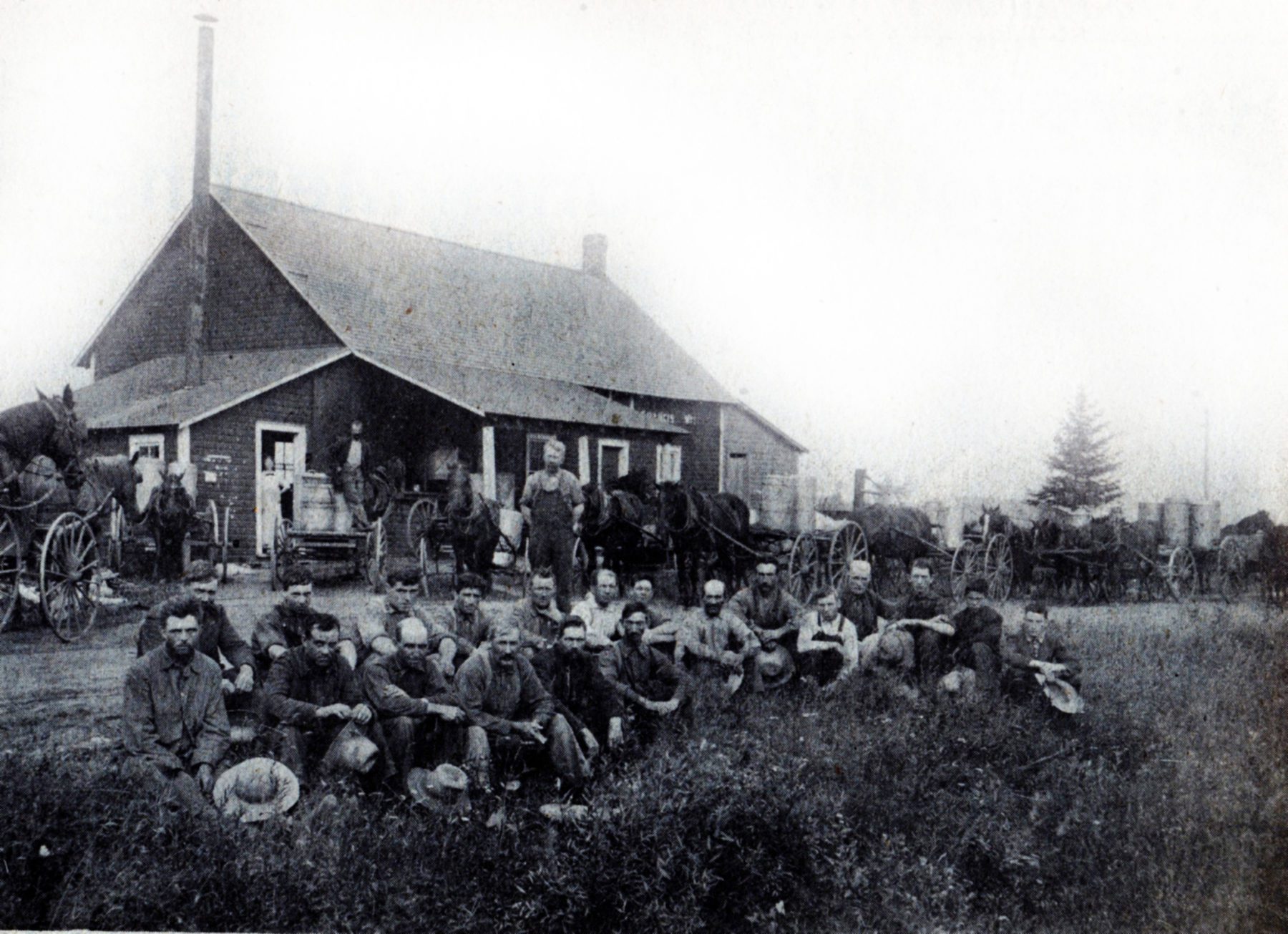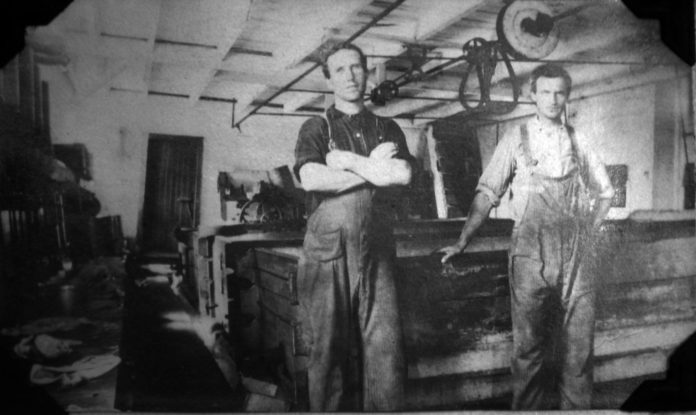At the turn of the Twentieth Century, cheese factories were a major part of the Ontario economy, and North Grenville and the surrounding area was one of the largest producers of cheese in Eastern Ontario. In 1895 there were 122 cheese factories in Leeds-Grenville. Every community seemed to have had its own cheese factory, and the work there, and revenue from making cheese, provided important income for farm families during the May to November cheese-making season.
Around 1900, a syndicate was formed to market the products of the many cheese factories in the area surrounding Kemptville, which became the centre for twenty-six factories by 1903. These included factories on the other side of the Rideau, as well as those in Oxford, South Gower and Kemptville. The Government appointed inspectors and instructors, who travelled around the factories, and provided information on advanced production methods and health and safety issues in the dairy barns and cheese factories.
The syndicates formed Boards for the buying and marketing of cheese from the local factories, much of which was sent for export to Great Britain. Cheese was an important export item for Canada, reaching a peak level in 1904, when 234 million pounds of cheese was exported to Great Britain, that was 95% of all the cheese imported by Britain that year. But, aside from increases during the two world wars, exports of cheese declined steadily after that. Public demand for liquid milk drew supplies away from cheese-making in the small community factories, and the introduction of large, automated facilities made the local cheese factory less and less economically viable.

It was not just the location of the Cheese Board in Kemptville that made North Grenville a major player in cheese production in Eastern Ontario. Residents of Oxford-on-Rideau and Kemptville were heavily involved in expanding the network of factories throughout the region. Edward Kidd of Burritt’s Rapids owned the factory in North Gower, as well as a string of others around Carleton County, including Manotick, and as far away as Carp. Edward learned the trade from his father, William, who built the first factory in Burritt’s Rapids in 1868.
Orlando Bush and Abraham Acton of Oxford built the factory in North Rideau on Donnelly Road in 1890. The Carsonby cheese maker learned his trade in Oxford Mills. The Malakoff factory was owned by Robert Beckett of Kemptville and Thomas Pettapiece of Oxford-on-Rideau.
The Goodstown factory was built and operated by Freeman Brown, of Oxford Mills. He was a sanitary inspector and dairy instructor for the Kemptville district network. He later worked as a cheese grader in the 1930’s, and was the main speaker at the Eastern Ontario Dairymen’s Association meeting in 1932. The following year, he was staff grader in Montreal. Beckett’s Landing factory was on the north side of the Rideau, near the swing bridge, and was built in 1900 by James Taylor, of Kemptville.
But the man known throughout the industry as “the Cheese King of Eastern Ontario”, James A. Sanderson, was a native of Oxford Station, where he built his first cheese factory in 1899. He also operated the factory at Patterson’s Corners, and he was the first operator to provide grading facilities at railway stations and Rideau Canal docks. His Oxford Station factory was the first refrigerated storage facility in Eastern Ontario, implemented in 1930 and, eventually, the storage facility’s capacity grew to 20,000 boxes of cheese.
Cheese was brought to his factory from factories around the region, graded and then shipped from the cold storage warehouse around Canada and to Great Britain and the United States. In 1901 he became President of the Kemptville Cheese Board. The Sanderson family operated the factory until it was destroyed by fire in 1963. The storage plant was bought in 1974 by Kemptville Foods Ltd. and later on by Harvex Elevators Ltd. in 1983.
The cheese industry also provided ancillary business for Kemptville. Cheese was packed in specially made boxes, manufactured by the McMaster Lumber Company in Kemptville, now the site of the Riverside Apartments. Cheeses varied between 75 and 90 pounds each and were wrapped in cheesecloth (naturally) before being packed in the round boxes for transport. In Oxford Mills, a carpenter called Ormond Barnard invented a wooden box which pressed and shredded cheese curds, an important advance in improving the production of cheese. His machine was used in factories throughout the country and abroad.
It is amazing how central to the social and economic life of North Grenville the production of cheese was in the not too distant past. Today, almost nothing remains to remind people of this historic industry, other than a few old cheese factories still standing around the municipality, memories of a different era in our shared story.









